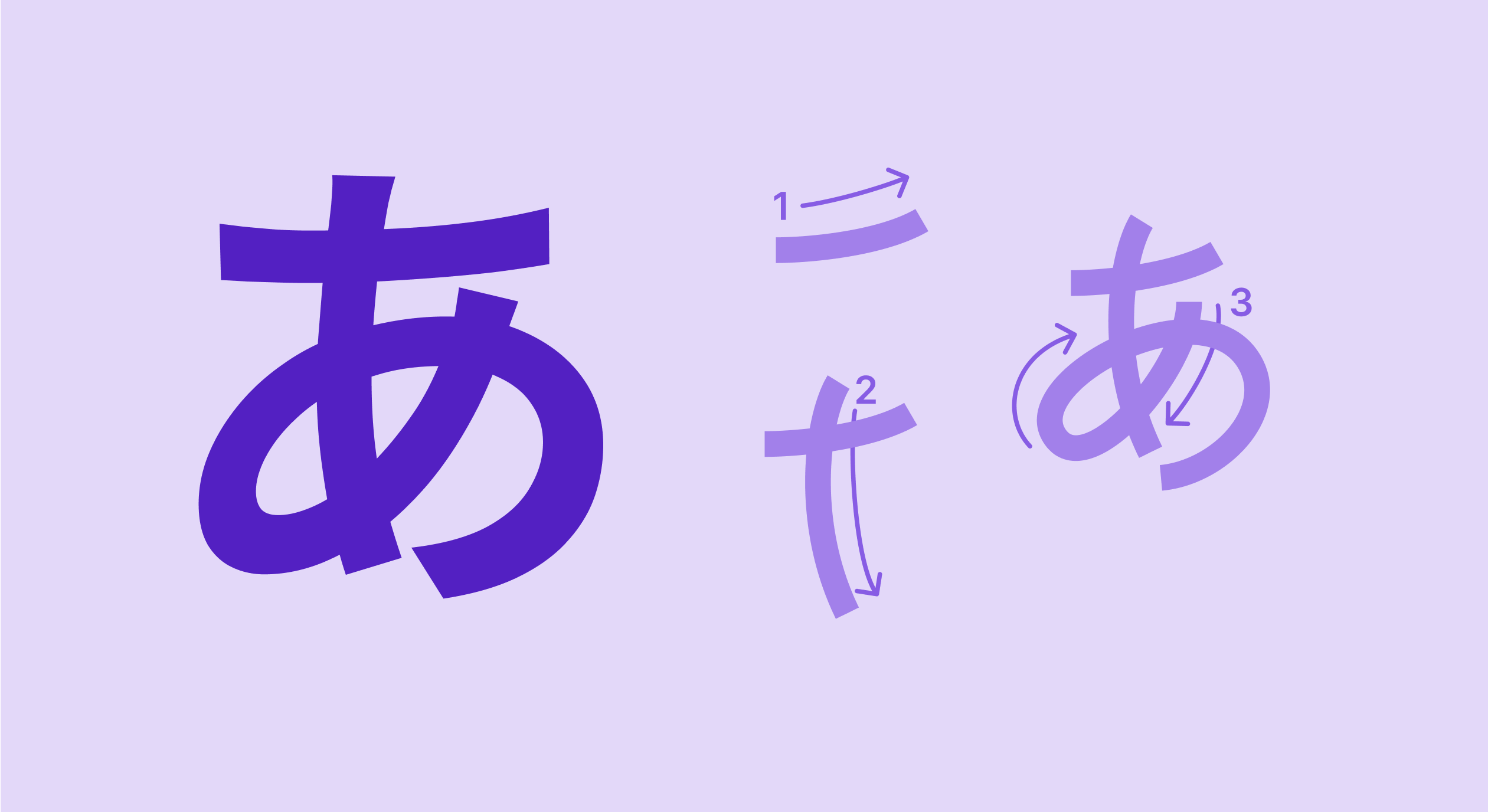Leverage Edu, a company that supports students studying abroad, has ranked the Top 10 most difficult languages to learn, placing Japanese as the 4th hardest language.
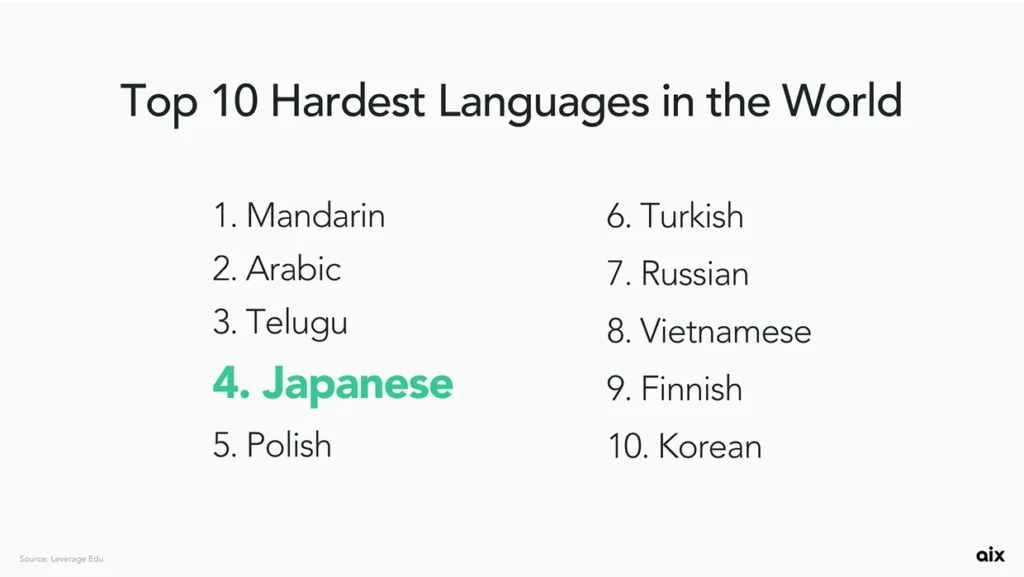
While multiple factors contribute to its complexity, the biggest challenge lies in its writing system. Japanese incorporates three distinct scripts: Hiragana, Katakana, and Kanji – each with different roles and usage.
- Hiragana: A syllabic script used for native words and grammatical elements.
- Katakana: Used primarily for foreign words, loanwords, and onomatopoeia.
- Kanji: Logographic characters borrowed from Chinese, often carrying multiple readings.
Understanding how these scripts function is key to mastering Japanese and crucial for app store optimization (ASO) when targeting Japanese users.
Understanding the Japanese writing system
Hiragana
Hiragana consists of 46 characters, each representing a syllable. It is used for native Japanese words, grammatical elements (e.g., particles, suffixes), and words with complex or rarely used Kanji forms.
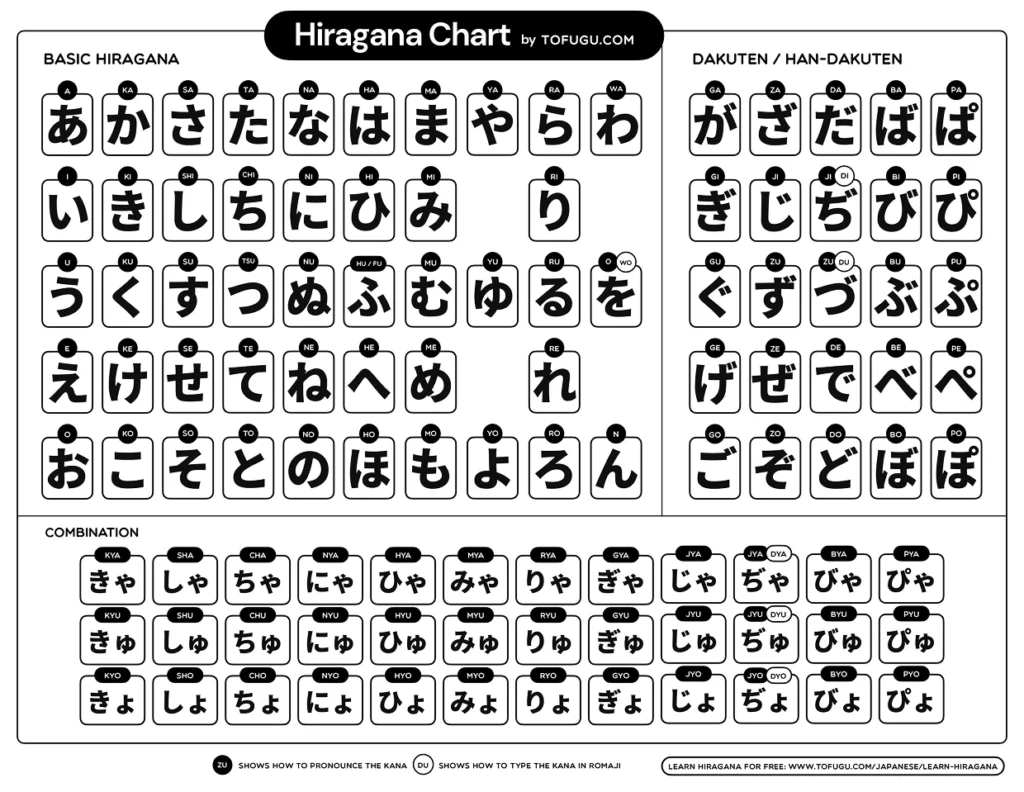
Since Hiragana is the simplest and most commonly used script, Japanese users often type search queries in Hiragana when looking for apps.
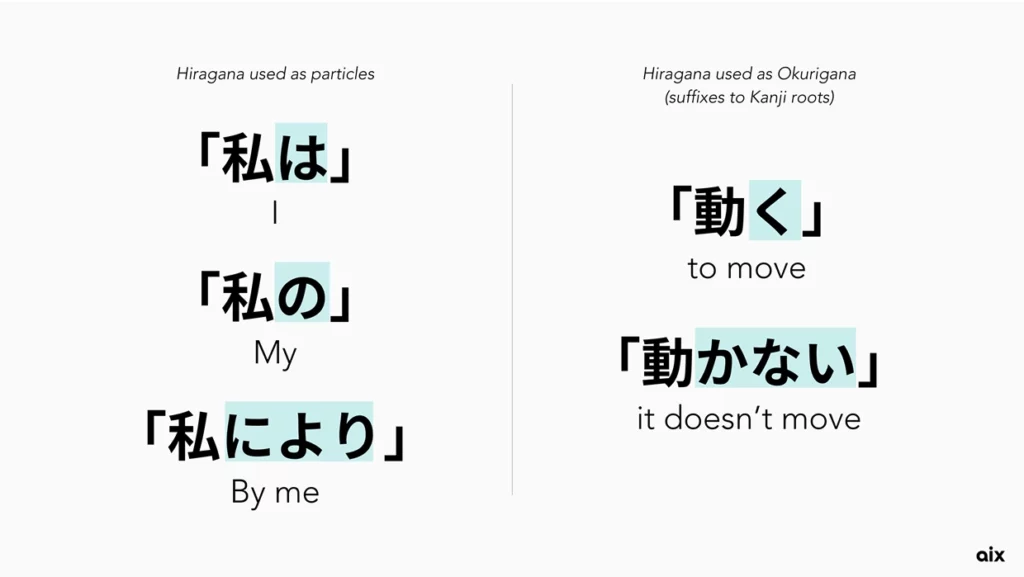
Katakana
Katakana, also composed of 46 characters, is visually distinct from Hiragana but follows the same phonetic structure. It is primarily used for foreign loanwords, names, and onomatopoeia.
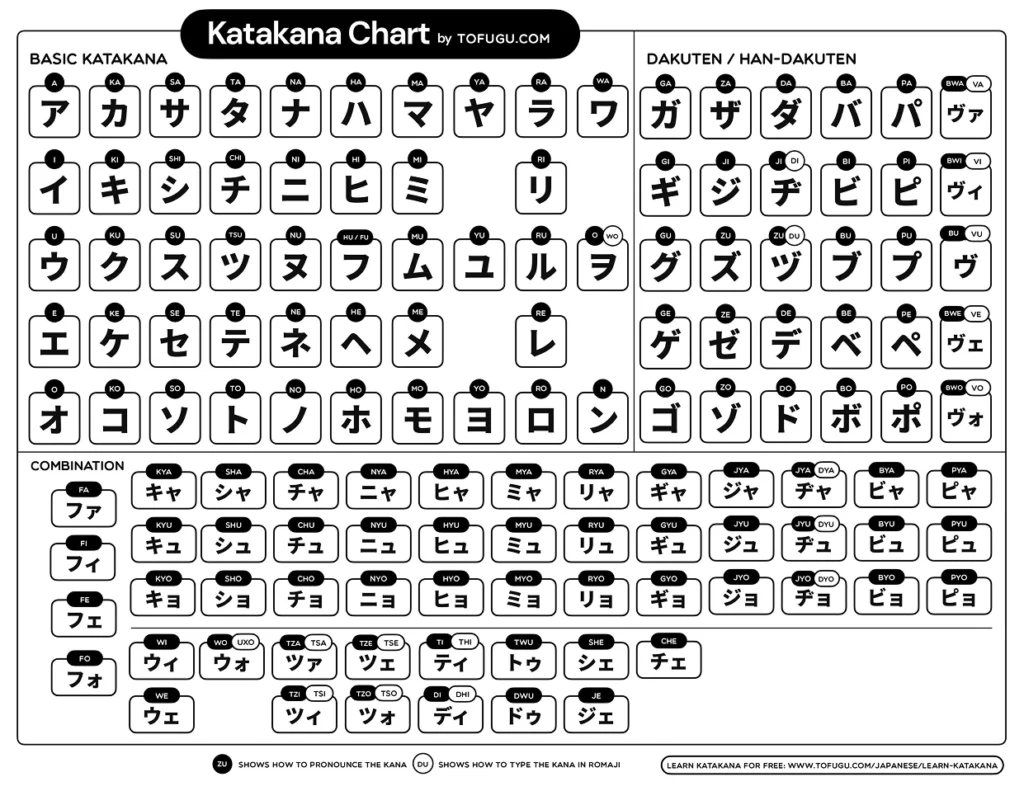
For ASO, loanwords written in Katakana can serve as important keywords, as many foreign concepts are more commonly searched in their Katakana form rather than their direct Japanese translation.
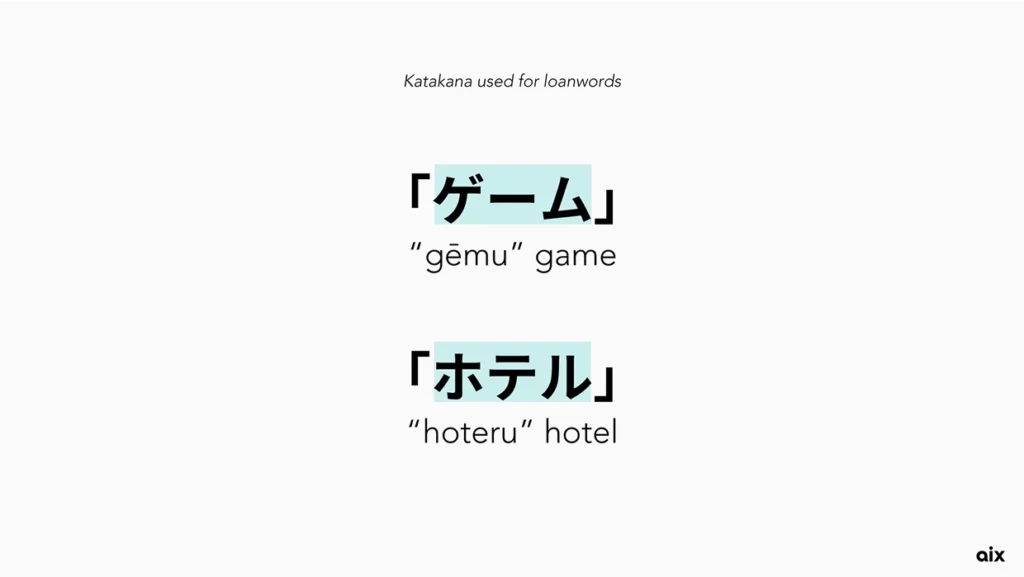
Kanji
Kanji is the most challenging part of the Japanese language. Unlike Hiragana and Katakana, which are phonetic, Kanji represents meanings rather than sounds. Kanji is an adopted version of Chinese characters, so it shares similar looks and linguistic characteristics. Yet different from Chinese characters, each Kanji can have multiple readings, categorized into:
- Onyomi (音読み): Based on the original Chinese pronunciation.
- Kunyomi (訓読み): The native Japanese reading.
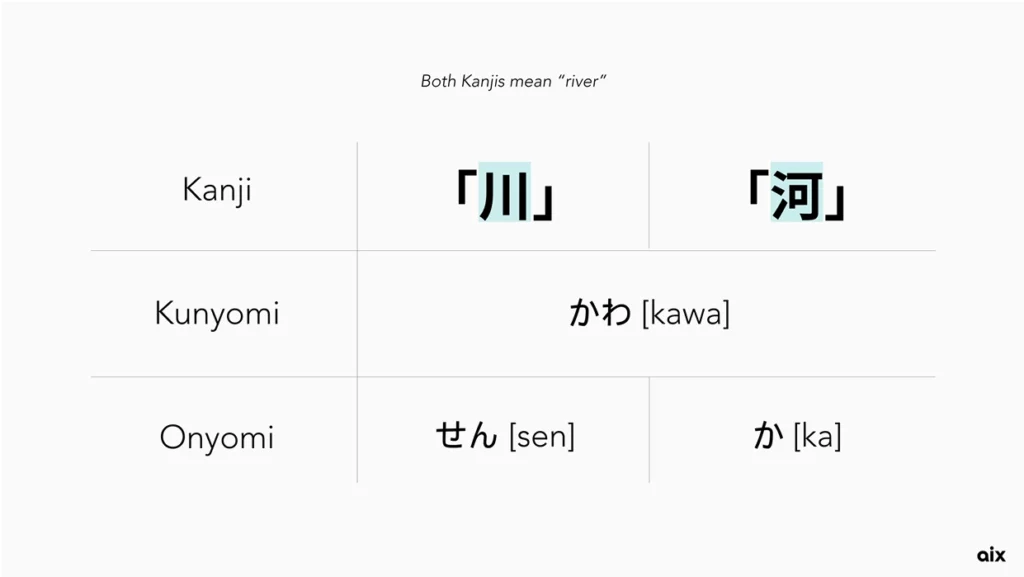
On the other hand, certain Kanji forms have the same Kunyomi but different meanings. Once you get used to Japanese, you will be able to distinguish what the discloser tries to say by the context most of the time, but it still can cause confusion.
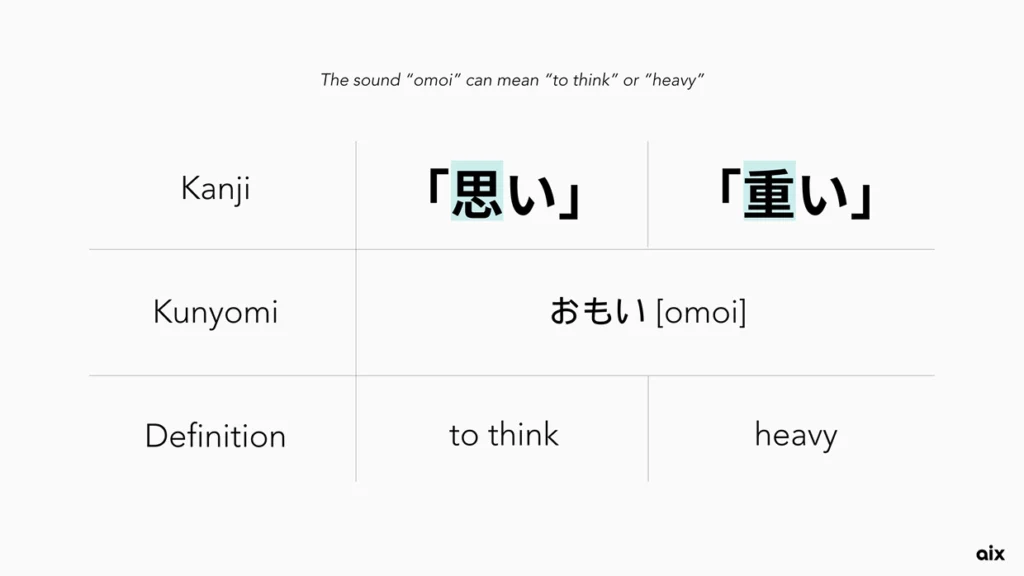
Japanese high school students master around 2,000 Kanji, but over 50,000 Kanji exist. This vast number makes the language challenging for both learners and localization efforts.
How Japanese users search for apps
The complexity of Japanese writing affects not just localization but also app store optimization (ASO). Many assume that translating keywords into Japanese is sufficient, but the reality is far more nuanced.
Typing starts with Hiragana
Regardless of whether the intended word is in Kanji or Katakana, users must first type in Hiragana before selecting the appropriate conversion from the keyboard suggestions. However, most users skip this step and leave their search queries in Hiragana, as conversion does not significantly impact search results.
This behavior impacts ASO because search suggestions and autocomplete results in app stores are often in Hiragana. Therefore, when optimizing for Japanese keywords, it is crucial to consider not just the standard Kanji or Katakana form but also how users spell the term in Hiragana.
Japanese keyboards & suggested searches
Japanese smartphone keyboards come in two main formats:
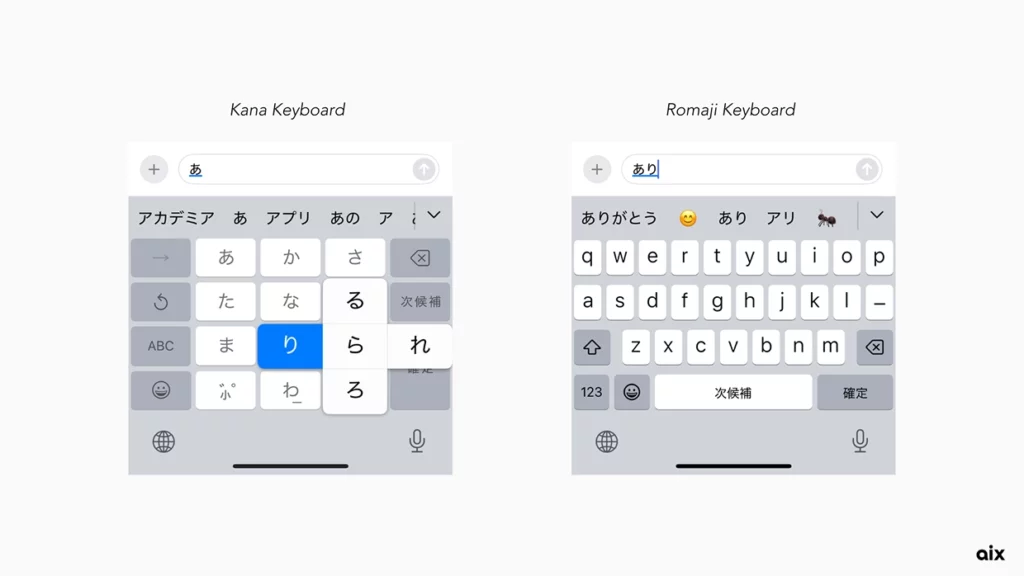
- Kana keyboard: Users tap or slide on Kana characters.
- Romaji keyboard: Users type using Latin letters, which convert to Hiragana.
Regardless of the input method, suggested search results appear mostly in Hiragana, reflecting common user behavior.
Loanwords as essential ASO keywords
While Hiragana dominates general search queries, Katakana is crucial for loanwords. Some foreign words have replaced native Japanese terms entirely, making their Katakana versions the dominant search keywords.
Example: “Camera”
The word “camera” exists in both native Japanese and loanword forms:
- 写真機 (shashin-ki) – Native Japanese
- カメラ (kamera) – Loanword
Although 写真機 is the accurate translation, カメラ is overwhelmingly more common. In fact, searching for 写真機 on an app store generates fewer suggested keywords, while カメラ yields multiple relevant results.
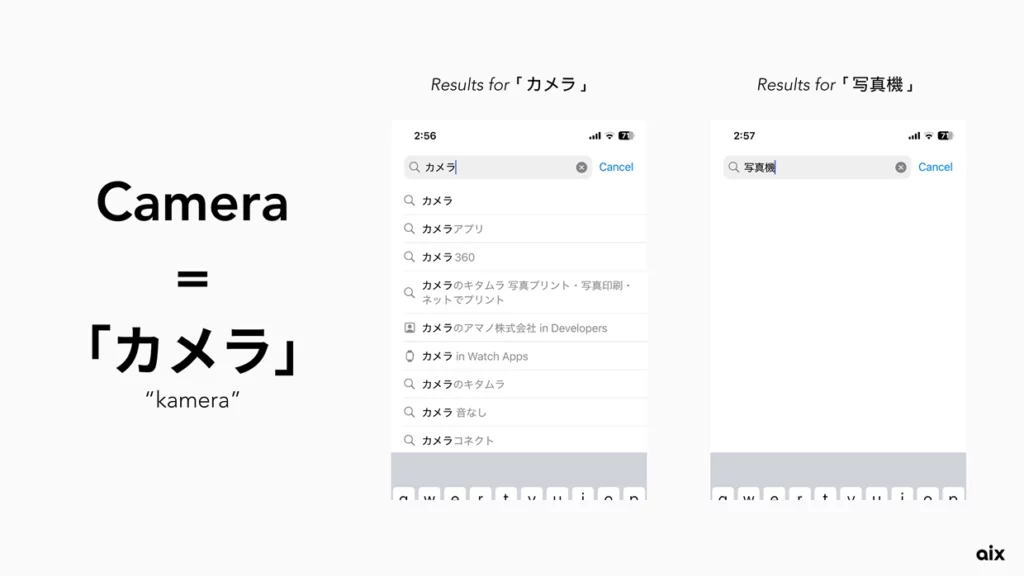
For ASO, using Katakana loanwords instead of direct translations can improve search visibility.
Example: “Photo”
Unlike “camera”, the word “photo” is commonly used in both native and loanword forms:
- 写真 (shashin) – Native Japanese
- フォト (foto) – Loanword
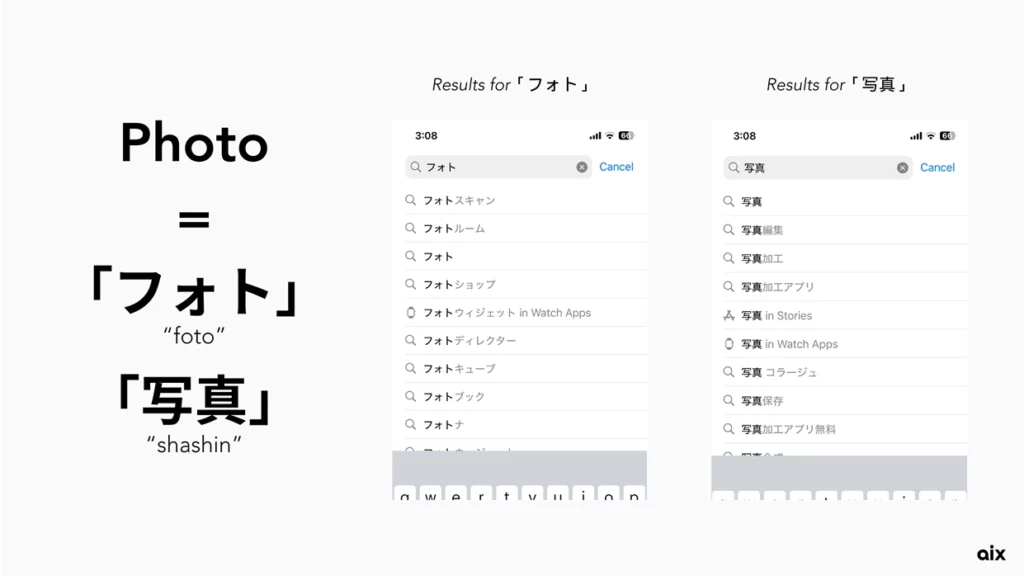
Search results for 写真 often include app-related suggestions such as “photo editing” or “photo album”, whereas フォト tends to appear in branded searches like “Photoshop” or “Google Photo”.
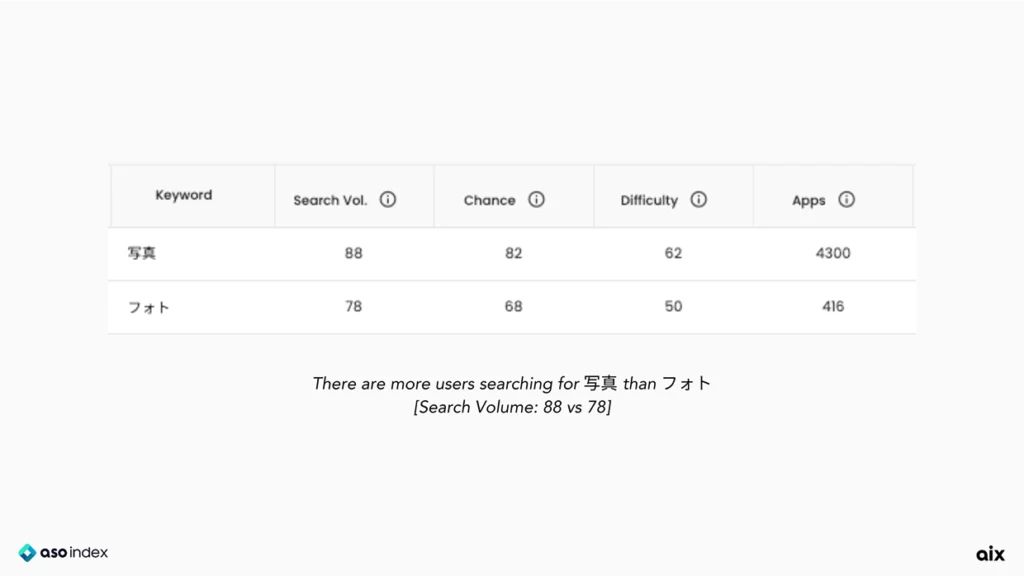
Analyzing these keywords using ASO index, it also shows that the keyword 写真 is more frequently searched in the market than フォト. Understanding these distinctions can help optimize app metadata with more effective keyword choices.
Loanwords in abbreviation
A unique characteristic of Japanese is the frequent abbreviation of loanwords. Unlike English, where abbreviations often use acronyms, Japanese abbreviations modify foreign words into shorter versions, which then become more commonly used than the original.
Examples of abbreviated loanwords:
- パソコン (Personal computer) – Instead of コンピュータ (konpyu-ta), Japanese users prefer パソコン (pasokon).
- スクショ (Screenshot) – Shortened from スクリーンショット (sukuri-nshotto).
- フリマ (Flea market) – Shortened from フリーマーケット (furi-ma-ketto).
Example: “Computer” in Japanese
While the full Katakana loanword for “computer” is コンピュータ (konpyu-ta), it is rarely used in everyday language. Instead, Japanese speakers prefer パソコン (pasokon), a condensed form of パーソナルコンピュータ (paasonaru konpyu-ta, “personal computer”).
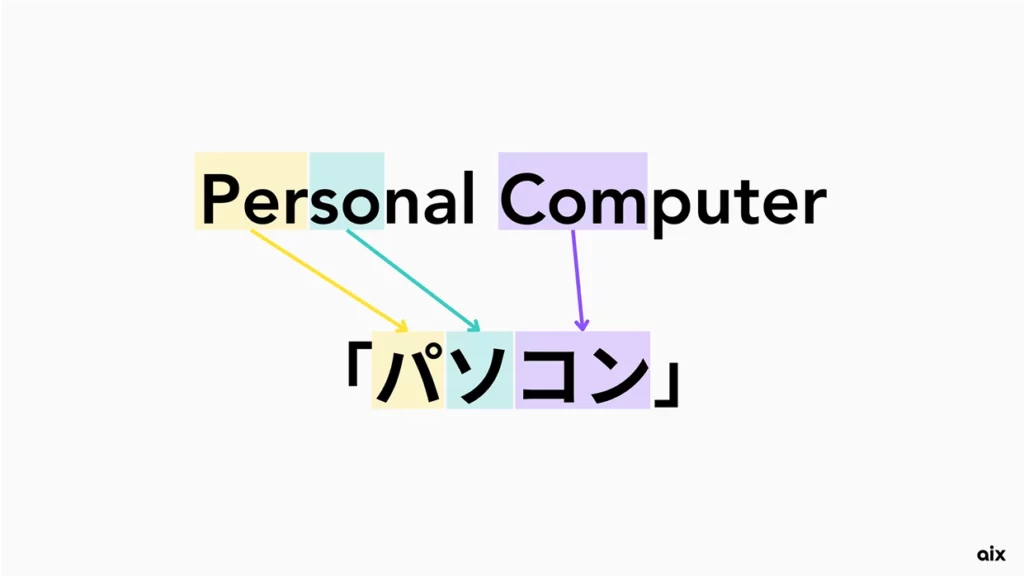
This preference is reflected in search behavior. When users look for computer-related apps or content, they overwhelmingly type パソコン (pasokon) instead of コンピュータ (konpyu-ta). App Store search suggestions confirm this, as パソコン generates more relevant search predictions than コンピュータ.
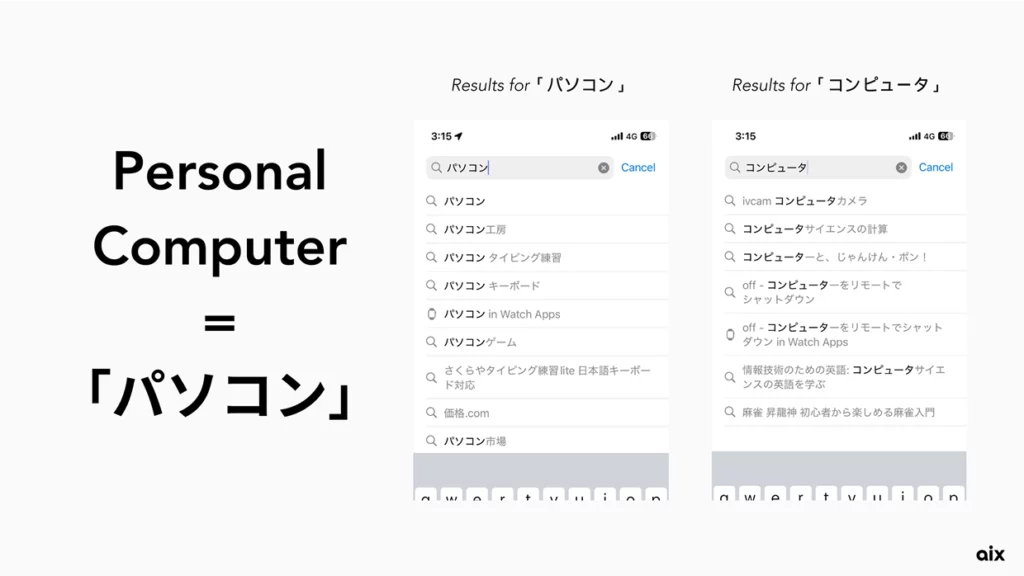
Interestingly, machine translations like Google Translate still favor コンピュータ as the translation for “computer”, despite its limited usage. This highlights the importance of understanding actual user behavior over direct translation in ASO.
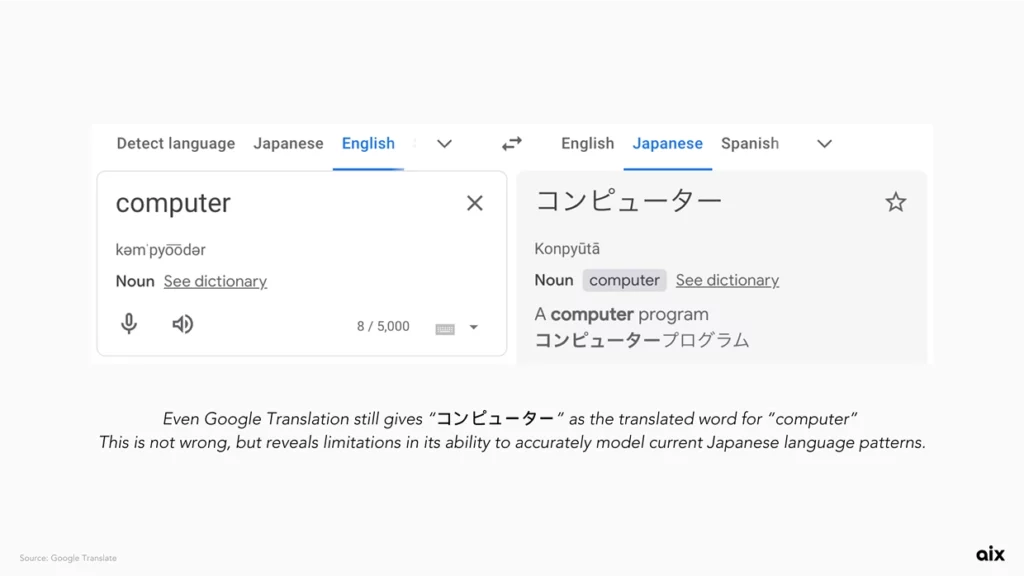
Thus, for app store optimization, パソコン should be prioritized as a keyword over コンピュータ, as it aligns better with how Japanese users search.This pattern applies to many foreign words, making abbreviated loanwords an essential component of ASO strategy in Japan.
Example: “Screenshot” in Japanese
“Screenshot” is another case where abbreviation is key. The full Katakana term スクリーンショット (sukuri-nshotto) is lengthy, so users commonly type スクショ (sukusho).
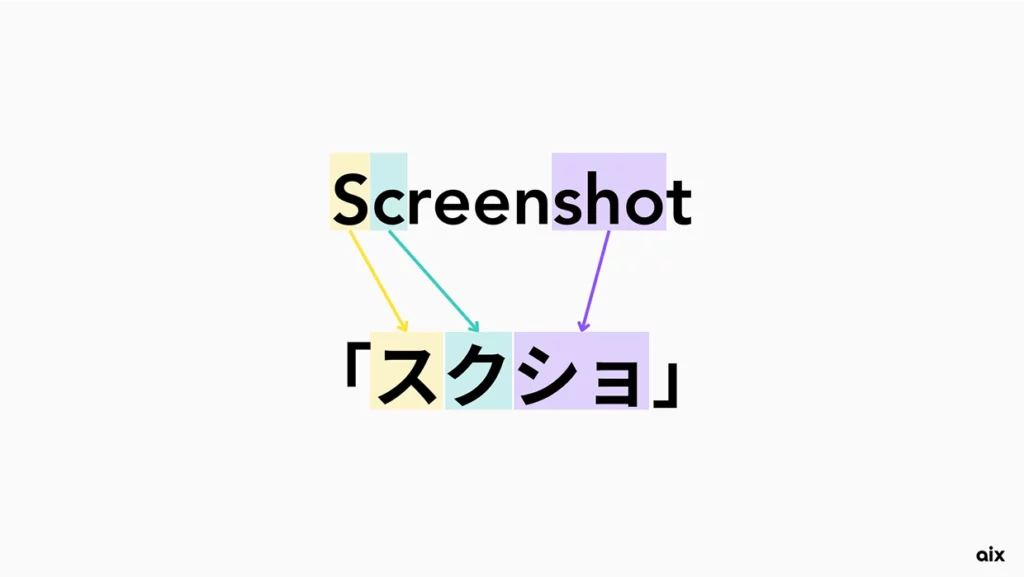
When optimizing an app for screenshot-related features, using スクショ as a keyword can significantly improve visibility.
Example: “Flea market” in Japanese
Flea market apps are popular in Japan, but the full term フリーマーケット (furi-ma-ketto) is rarely used. Instead, the abbreviation フリマ (furima) dominates. This pattern applies to many digital-related terms, making it essential to research common abbreviations when localizing an app.
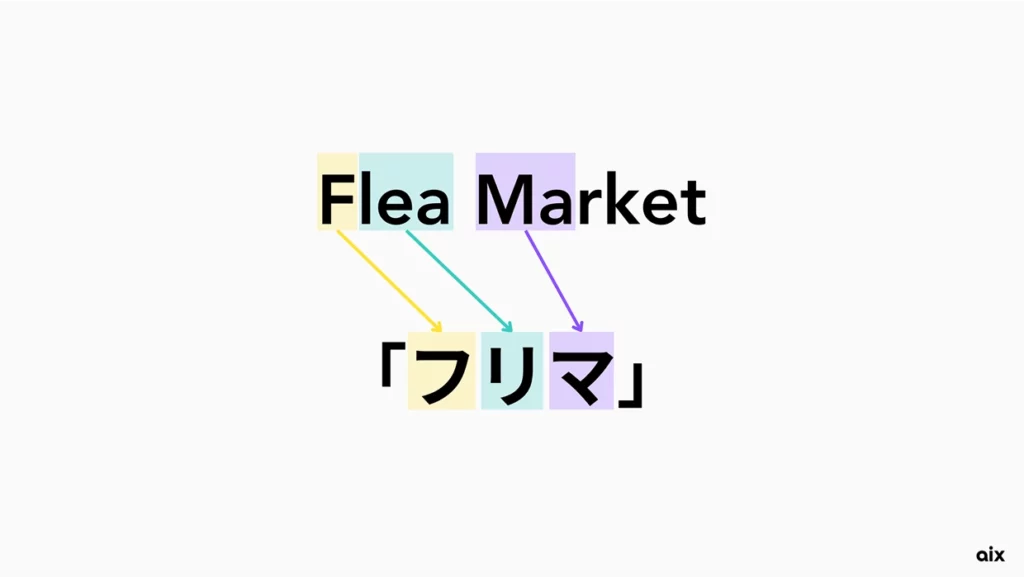
Wrap-up
Japanese ASO is complex yet strategic, requiring more than just direct translations. To effectively optimize keywords:
- Prioritize Hiragana – Since most searches begin and end in Hiragana, ensuring Hiragana-based keywords is crucial.
- Leverage Katakana for loanwords – Some foreign words are more commonly used in their Katakana form rather than native Japanese translations.
- Use popular abbreviations – Many shortened versions of loanwords outperform their original forms in search volume.
By understanding Japanese search behaviors, app developers can increase visibility and user acquisition in the Japanese market.
Final thoughts
If your goal is to increase app visibility in Japan, your ASO strategy must go beyond literal translations. Instead, focus on how Japanese users actually type and search. With the right keyword selection and localization strategy, you can effectively penetrate the Japanese market.
Together with Jamie Lou Borile from aix Inc., we’ve unpacked the nuances of Japanese search behavior to help you succeed in this unique market. If you want to learn more about Japanese app market, check out our previous articles:
- How Japanese apps onboard users and how it differs from the West
- What Japanese paywalls look like and why Western strategies won’t work
If you are looking for more insights on ASO and marketing landscape in Japan, visit aixpost below.


